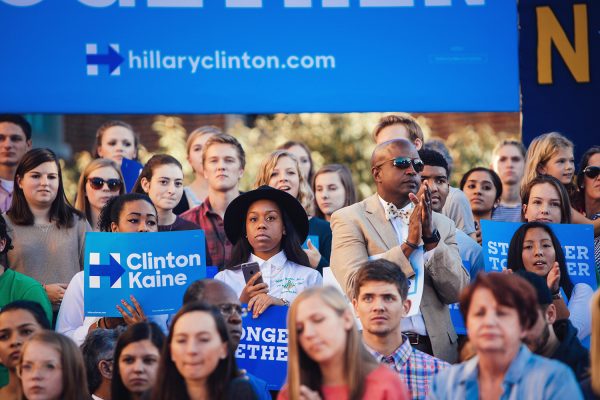
In my last post about the demographic shifts that are reshaping America’s two major political parties, I may have given the impression that I see these as unstoppable forces of history that have nothing to do with the choices party actors make.
That’s not the case. It’s both.
Demographic and economic changes, including heterogenization, deindustrialization and the stratification of society along educational lines, are global, long-term and almost impossible to reverse. They have a huge impact on the composition of both the Democratic and Republican Party coalitions.
But the choices Democrats and Republicans make about what sort of party they want to be matter just as much.
Major trends
Two of the three major trends that have caused movement between the two parties largely cancel each other out: the consolidation of lower-educated whites in the Republican Party and the flight of minority voters to the Democrats.
These trends are not absolute, nor are they impossible to slow down or even reverse. But that would require Democrats relenting on social justice and Republicans becoming more relaxed about the browning of America. I don’t think either is likely.
That leaves the third trend as the decisive one: middle incomes with college, but not postgraduate, degrees — once solidly Republican — becoming more and more Democratic with each election cycle. This is the great American middle class: still mostly white but increasingly diverse; temperamentally conservative but increasingly relaxed about liberal social norms. Donald Trump won the election because these voters didn’t abandon him in droves.
Doubling down
Republicans are unlikely to recognize they won by a whisker and more likely to overreach. The Trump program — clamping down on illegal immigration, reducing taxes, reforming the welfare state, withdrawing America from the world — is unlikely to be popular.
Even if Republicans deemphasize divisive social issues like abortion and gay marriage — neither of which Trump seems to care much about — they are still unlikely to rehabilitate their image with ethnic and millennial voters. The party of Trump is not for them.
Nor are Democrats likely to make a serious effort to win back working-class whites in industrial states like Michigan and Ohio. If Trump governs the way he campaigned, Democrats are more likely to double down on defending immigration, diversity, redistribution and American leadership in the world.
Such a program could galvanize minorities and liberal college graduates, who together form a majority.
Hillary Clinton won two million more votes than Trump nationwide and did better than previous Democratic candidates in Sun Belt states like Arizona and Georgia. (Although she didn’t live up to expectations in Florida and North Carolina, which arguably cost her the election.)
More than math
This isn’t just about electoral math. Democrats have already decided they are cosmopolitan and internationalist. They are the party of city dwellers, feminists, professionals, tech entrepreneurs and young people. They are not going to reconstitute the New Deal coalition now that it turns out demographic and social changes haven’t caught up with their liberal preferences quickly enough.
The challenge for Democrats is not figuring out how to weaken their message in order to win back a shrinking demographic; it’s finding an Electoral College majority for the platform they believe in.
